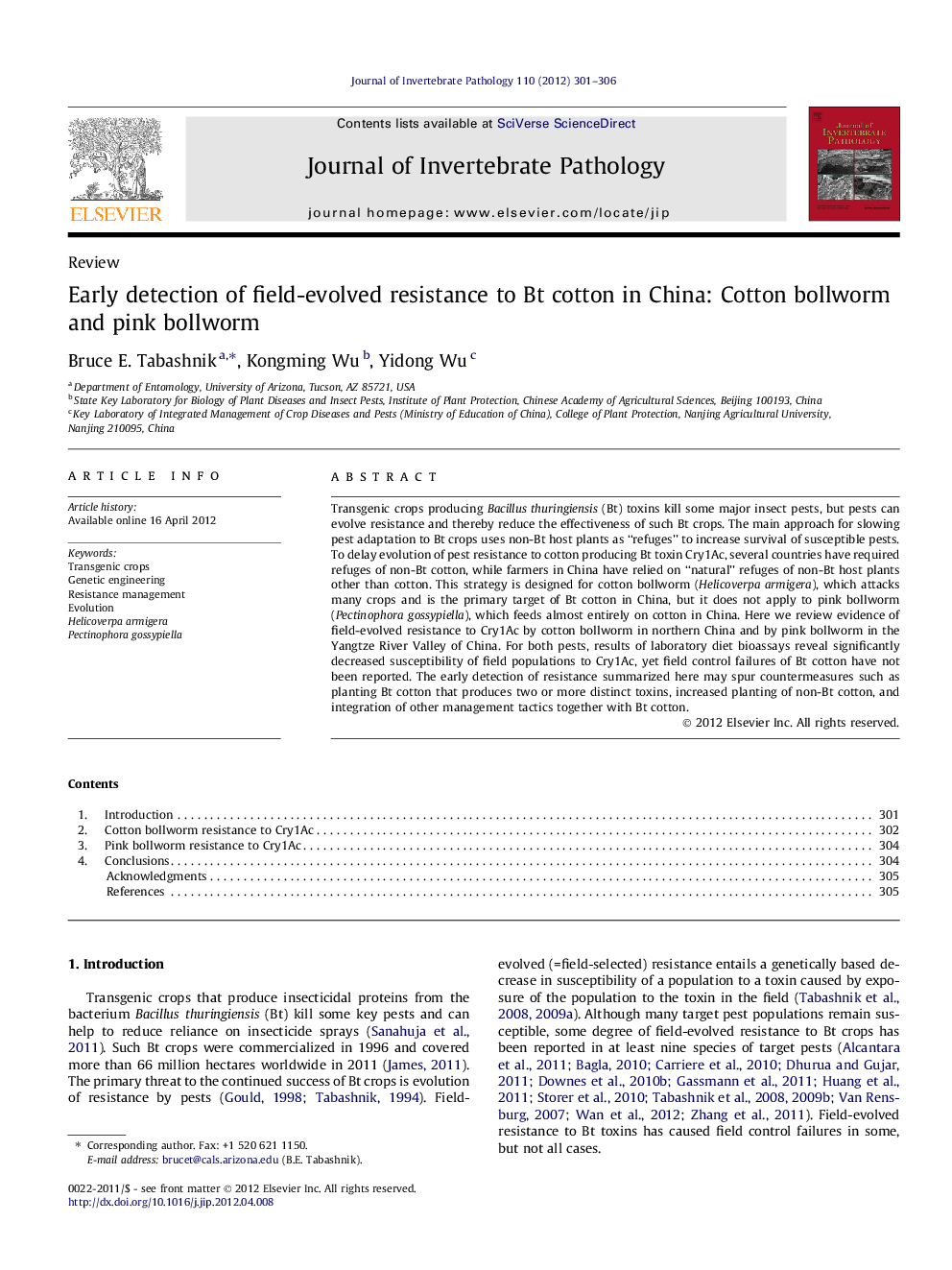| کد مقاله | کد نشریه | سال انتشار | مقاله انگلیسی | نسخه تمام متن |
|---|---|---|---|---|
| 6389659 | 1628238 | 2012 | 6 صفحه PDF | دانلود رایگان |

Transgenic crops producing Bacillus thuringiensis (Bt) toxins kill some major insect pests, but pests can evolve resistance and thereby reduce the effectiveness of such Bt crops. The main approach for slowing pest adaptation to Bt crops uses non-Bt host plants as “refuges” to increase survival of susceptible pests. To delay evolution of pest resistance to cotton producing Bt toxin Cry1Ac, several countries have required refuges of non-Bt cotton, while farmers in China have relied on “natural” refuges of non-Bt host plants other than cotton. This strategy is designed for cotton bollworm (Helicoverpa armigera), which attacks many crops and is the primary target of Bt cotton in China, but it does not apply to pink bollworm (Pectinophora gossypiella), which feeds almost entirely on cotton in China. Here we review evidence of field-evolved resistance to Cry1Ac by cotton bollworm in northern China and by pink bollworm in the Yangtze River Valley of China. For both pests, results of laboratory diet bioassays reveal significantly decreased susceptibility of field populations to Cry1Ac, yet field control failures of Bt cotton have not been reported. The early detection of resistance summarized here may spur countermeasures such as planting Bt cotton that produces two or more distinct toxins, increased planting of non-Bt cotton, and integration of other management tactics together with Bt cotton.
(left) Concentration of activated Bt toxin Cry1Ac killing 50% of cotton bollworm larvae (LC50 and 95% fiducial limits) from populations sampled in 2010 from northern China (black circles) and northwestern China (open circles); and by a susceptible laboratory strain (SCD, triangle) (Zhang et al., 2011). Resistance ratio: LC50 divided by the LC50 of the susceptible Shawan population. Asterisks indicate LC50 values significantly greater than the LC50 values of all three susceptible populations (SCD, Sc, and Sw). (right) Percentage of pink bollworm field populations in the Yangtze River Valley with survivors at the diagnostic concentration (9 μg Cry1Ac per ml diet) (Wan et al., 2012). The number of field populations tested was 4 in 2005, 13 in 2006, 7 in 2007, 8 in 2008, 8 in 2009, and 11 in 2010.Highlights⺠Transgenic cotton producing Bt toxin Cry1Ac has been planted in China since 1997. ⺠Resistance to Cry1Ac has been detected in two major pests of cotton in China. ⺠Early detection of resistance may spur proactive countermeasures.
Journal: Journal of Invertebrate Pathology - Volume 110, Issue 3, July 2012, Pages 301-306